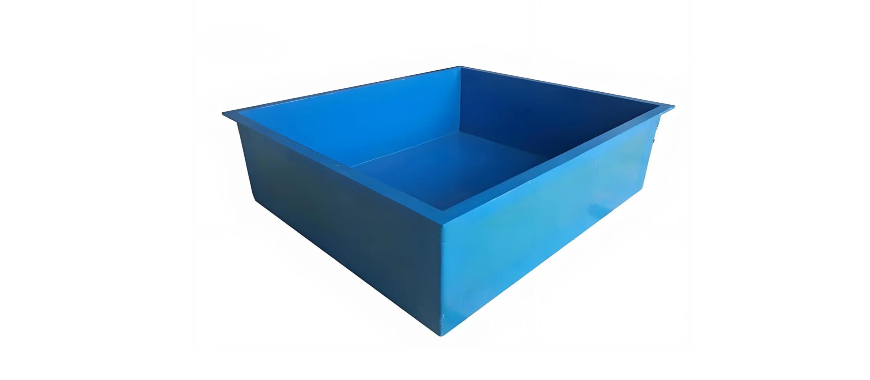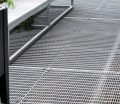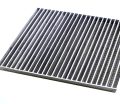
Roof tank fiberglass offers a reliable solution for water storage, providing excellent durability and performance. Fiberglass is widely used in the water tank industry because of its corrosion-resistant and lightweight properties, making it a preferred material for various applications. Roof tank fiberglass is ideal for residential and commercial buildings, as it can be easily installed on rooftops without putting excess strain on the structure. Its non-corrosive nature ensures long-term water storage without the risk of contamination. Additionally, roof tank fiberglass requires minimal maintenance, offering a cost-effective option for those looking to store water efficiently and safely over long periods.
Roof Tank Fiberglass Price
The price of roof tank fiberglass depends on several factors, including the size of the tank, the brand, and the manufacturer. Larger tanks naturally cost more due to the increased material and manufacturing requirements. A 500-gallon roof tank fiberglass is one of the more popular sizes for residential use and typically falls within a moderate price range.
Factors Influencing Roof Tank Fiberglass Price
The size of the roof tank fiberglass is a major factor in determining cost. Smaller tanks cost less, but larger tanks, such as 500-gallon models, are more expensive due to higher material costs. The brand and manufacturer also play a role. Well-established brands may charge more, reflecting their reputation for quality and reliability. Manufacturing techniques and certifications also affect the overall pricing.
Average Price Range for Common Capacities
A typical 500-gallon roof tank fiberglass can range from $800 to $2,500, depending on the brand and manufacturer. Smaller models, such as 200-gallon tanks, can cost as little as $500, while larger tanks exceed $3,000. Prices vary based on features such as UV protection, additional coatings, and reinforced walls.
Comparison with Other Materials
When comparing roof tank fiberglass to other materials, such as steel or plastic, fiberglass offers excellent value for long-term use. Steel tanks, while strong, are prone to corrosion and may require extra coatings, which increases costs. Plastic tanks are usually cheaper but may degrade over time and are more vulnerable to UV damage. In contrast, roof tank fiberglass provides a balanced combination of durability and cost-effectiveness, making it a wise investment for both residential and commercial water storage needs.
Fiberglass Water Tank Price: Key Considerations
The price of fiberglass water tanks, including roof tank fiberglass, is determined by several factors in the market, especially for home use. These factors include production methods, materials, and market demand. Manufacturing processes, such as hand-laying or automated production, can significantly affect the final price of a roof tank fiberglass.
Impact of Manufacturing Processes and Materials
Roof tank fiberglass is produced using various techniques, each influencing cost. Hand-laminated tanks are more expensive due to the labor involved, while machine-manufactured tanks tend to be more cost-effective. The materials used also play a key role. High-quality resin and hollow glass fibers increase durability, but they also raise the price of the tank. In contrast, lower-grade materials may lower the initial price but lead to reduced longevity.
Long-term Savings from Low Maintenance and Durability
Although roof tank fiberglass may have a higher upfront cost than plastic, its long-term savings are notable. Fiberglass requires little to no maintenance due to its non-corrosive nature. Its durability ensures it will last longer, reducing the need for replacements. This is similar to how fiberglass rods, known for their exceptional strength and resistance to wear and tear, maintain their structural integrity even in harsh environments. Homeowners save money over time by avoiding frequent repairs or replacements, making roof tank fiberglass a cost-effective choice for water storage. The long-lasting properties of fiberglass reduce the likelihood of damage, contributing to fewer costly repairs and a more reliable water storage solution.
Benefits of Choosing a Fiberglass Tub Front Panel
Fiberglass Tank Manufacturers
When choosing a manufacturer for roof tank fiberglass, it’s important to consider several factors to ensure the right selection for your water storage needs. Leading manufacturers, like GangLong Fiberglass, are known for their high-quality tanks and solid reputations in the industry. Each brand offers unique benefits in terms of product quality, durability, and price points.
Key Considerations When Selecting a Manufacturer
When evaluating fiberglass tank manufacturers, certifications and industry reputation are crucial. Homeowners should look for manufacturers that comply with relevant standards for potable water storage. GangLong Fiberglass, for example, provides tanks with food-grade certifications, ensuring safety for home use. Additionally, customer reviews and feedback can offer valuable insight into a manufacturer’s reliability and product durability. A well-regarded brand often guarantees that their roof tank fiberglass is made with the highest quality materials and the latest manufacturing technologies.
Local vs. International Manufacturers
Choosing between local and international manufacturers for your roof tank fiberglass also influences pricing and availability. Local manufacturers can offer faster delivery and easier customer support, making them a more convenient option for urgent projects. They may also have lower transportation costs, which could make their fiberglass tanks more affordable. International manufacturers, on the other hand, may provide a wider range of customization options and competitive pricing due to lower production costs. However, shipping fees and longer wait times for product delivery might offset these savings.
In terms of pricing, GangLong Fiberglass offers a competitive range, balancing quality with affordability. Local manufacturers typically have more immediate availability, but international brands might offer lower prices for bulk orders. Homeowners need to weigh these factors when selecting a manufacturer for their roof tank fiberglass to find the best fit for their needs and budget.
Fiberglass Water Tanks for Home Use
Fiberglass water tanks, particularly roof tank fiberglass, are an excellent choice for home use due to their durability, safety, and efficiency. These tanks offer homeowners numerous benefits, including non-corrosive and non-toxic properties, making them ideal for storing potable water. Here are five key reasons why roof tank fiberglass is a smart investment for residential water storage.
Durability and Longevity
One of the most significant advantages of roof tank fiberglass is its exceptional durability. Fiberglass is a highly resilient material that withstands harsh environmental conditions, including extreme temperatures, heavy winds, and UV radiation. Unlike steel, fiberglass does not rust or corrode, ensuring a long lifespan. Homeowners can expect fiberglass water tanks to last for decades with minimal maintenance, providing a reliable water storage solution.
The material’s inherent strength also allows fiberglass tanks to resist external pressures and impacts, making them less susceptible to damage from environmental factors or debris. This durability translates to long-term cost savings, as homeowners won’t need to frequently repair or replace their tanks.
Non-Corrosive and Non-Toxic
Roof tank fiberglass is non-corrosive, meaning it won’t deteriorate when exposed to water or moisture, unlike steel tanks, which are prone to rusting. This characteristic makes fiberglass an ideal material for water storage, as it prevents contamination of the water supply. Additionally, fiberglass is non-toxic, ensuring that no harmful chemicals leach into the stored water, keeping it safe for household use, including drinking, cooking, and cleaning. These properties make fiberglass water tanks highly suitable for homes that rely on rainwater harvesting or need clean, safe water storage.
Space Efficiency
Fiberglass water tanks are designed to maximize space efficiency, particularly in residential settings where rooftop installation is common. Roof tank fiberglass is lightweight compared to steel or concrete tanks, making it easier to install on rooftops without overburdening the structure. This lightweight feature also allows for larger tanks to be installed on residential rooftops, providing substantial water storage capacity without compromising the integrity of the building. The design of these tanks often includes structural reinforcement elements similar to fiberglass fluted tubes, which enhance strength while keeping the overall weight manageable.
For homes with limited ground space, installing a roof tank fiberglass is an excellent way to utilize vertical space while maintaining access to a reliable water source. The tanks can be customized to fit specific rooftop dimensions, making them highly versatile for different architectural designs.
Low Maintenance
Fiberglass water tanks require minimal maintenance, saving homeowners time and money in the long run. Unlike steel tanks, which need regular inspections for rust and corrosion, roof tank fiberglass does not require constant upkeep. The smooth surface of fiberglass tanks also makes them easier to clean, reducing the risk of bacterial growth or contamination.
Additionally, fiberglass tanks are resistant to algae growth when properly installed and protected from sunlight. This reduces the need for frequent cleaning or chemical treatments, further lowering maintenance costs.
Cost-Effectiveness
While fiberglass tanks may have a higher initial cost compared to plastic, they offer significant long-term savings due to their durability and low maintenance requirements. Roof tank fiberglass is a cost-effective investment for homeowners looking for a reliable, long-lasting water storage solution. The durability and non-toxic properties of fiberglass ensure that the water remains safe for consumption over time. Much like the strength and reliability of a double sided fiberglass box, these tanks are built to last and withstand the elements, offering a secure and efficient solution. The combination of durability, non-toxic properties, and ease of installation makes fiberglass water tanks a highly economical choice over time.
Key Fiberglass Sheet Uses for Enhanced Insulation
500 Gallon Roof Tank Fiberglass
A 500-gallon roof tank fiberglass is an ideal solution for homes with moderate water storage needs. This tank size provides sufficient capacity for households that require rainwater harvesting or backup water storage while maintaining a compact profile that fits well on residential rooftops. The 500-gallon capacity is often chosen by homeowners because it strikes a balance between storage volume and ease of installation, making it both efficient and practical.
Installation Tips and Weight Considerations
Installing a 500-gallon roof tank fiberglass is straightforward due to its lightweight nature compared to other materials like steel or concrete. However, proper structural support is still required to ensure that the rooftop can handle the weight of the tank, especially when filled with water. A full 500-gallon roof tank fiberglass weighs approximately 4,200 pounds (around 1,900 kg), including the weight of the water and the tank itself. It’s important to consult a structural engineer to confirm the rooftop can safely support the tank before installation.
Placement should ensure easy access for maintenance, cleaning, and potential repairs. Additionally, the installation area should be leveled properly to prevent any shifting or uneven pressure distribution, which could cause long-term damage to the roof or the tank itself.
Ease of Maintenance
One of the key benefits of a 500-gallon roof tank fiberglass is its low maintenance requirements. The smooth, non-porous surface of fiberglass prevents the buildup of algae or bacteria, which means the tank requires less frequent cleaning compared to other materials. Periodic inspections are recommended to ensure the tank remains in optimal condition, but maintenance is generally limited to cleaning the tank interior and checking for cracks or leaks.
Price Overview and Size Comparison
The price of a 500-gallon roof tank fiberglass typically ranges from $800 to $2,500, depending on the brand and any additional features like UV protection or reinforcement. Compared to smaller sizes, such as 300-gallon tanks, the 500-gallon model provides more value for money due to its increased capacity. Larger sizes, such as 1,000-gallon tanks, offer more storage but come at a higher price and require more structural support for rooftop installation. The 500-gallon roof tank fiberglass strikes a balance between affordability and functionality, making it a popular choice for many homeowners looking for reliable water storage.
Innovative Designs in Galvanised Steel Walkway Grating
Roof Tank Fiberglass: A Durable and Cost-Effective Water Storage Solution
Advantages of Roof Tank Fiberglass for Residential and Commercial Use
Choosing roof tank fiberglass for residential and commercial applications offers numerous benefits, making it a highly practical and reliable option for water storage. Fiberglass tanks provide exceptional durability, ensuring they can withstand harsh environmental conditions, including exposure to UV rays, heavy winds, and extreme temperatures. Their corrosion-resistant properties make them ideal for long-term use without the risk of rust or deterioration, which is a common issue with steel tanks. This durability directly translates into fewer repairs and replacements, offering significant long-term cost-effectiveness.
Safety and Maintenance Benefits
In terms of safety, roof tank fiberglass is non-toxic and non-corrosive, ensuring that the water stored remains clean and safe for consumption. This makes fiberglass tanks a top choice for homeowners who rely on rainwater harvesting or need backup water storage for household use. The smooth interior surface of fiberglass tanks reduces the risk of bacterial growth and algae formation, further contributing to the safety and cleanliness of the stored water. The durability and easy maintenance of fiberglass extend beyond water storage; for instance, a fiberglass shower with tub offers the same long-lasting and low-maintenance benefits for bathrooms. For commercial applications, the ease of maintenance and long lifespan make roof tank fiberglass an efficient and cost-effective solution for water storage needs.
Ease of Installation and Customization
The lightweight nature of roof tank fiberglass makes it easier to install, especially on rooftops. This feature is particularly beneficial for residential buildings where space is limited. Fiberglass tanks can be customized to fit specific requirements, ensuring that homeowners and businesses can optimize their water storage systems without compromising on quality or capacity.
Contacting Manufacturers for Quotes and Custom Options
For those interested in purchasing a roof tank fiberglass, obtaining quotes, repairs, or customization options from reputable fiberglass tank manufacturers is simple. Contacting manufacturers like GangLong Fiberglass or other trusted brands ensures that you receive quality products tailored to your needs. Most manufacturers provide detailed consultations to help determine the right size, capacity, and installation options for your specific application. In addition to roof tanks, fiberglass products like fiberglass shrimp poles are also available, offering reliable and durable solutions for various uses. Whether for residential or commercial use, roof tank fiberglass is an investment in safe, reliable, and long-lasting water storage.
FAQs about Roof Tank Fiberglass
Fiberglass tanks, while durable, have a few disadvantages. One issue is their brittleness. Under extreme stress or impact, fiberglass can crack, which may lead to leakage. Additionally, fiberglass tanks are sensitive to UV exposure, so if they are not properly coated or covered, they may degrade over time when exposed to direct sunlight. In some cases, algae growth can occur if the tank allows light to penetrate. Fiberglass tanks can also be more expensive upfront compared to plastic alternatives, although they offer better long-term value due to their durability and low maintenance requirements.
Yes, fiberglass is safe for use in water tanks. Fiberglass tanks designed for water storage are often lined with a food-grade interior coating, ensuring the water remains safe for consumption. Fiberglass does not leach harmful chemicals, making it a non-toxic material for storing potable water. Additionally, fiberglass water tanks are corrosion-resistant, which prevents contamination from rust or degradation over time. Many fiberglass tanks meet or exceed health and safety standards for drinking water, providing a safe and reliable option for homeowners and commercial use alike.
Fiberglass tanks are known for their long lifespan. When properly maintained, a fiberglass tank can last 30 to 40 years or more. The material’s non-corrosive and weather-resistant properties make it ideal for long-term use. Unlike steel, fiberglass does not rust, and it is resistant to many chemicals. The durability of the tank is dependent on installation, environmental conditions, and regular maintenance. By keeping the tank clean and avoiding heavy impacts, you can ensure it reaches its maximum life expectancy.
The cost of a fiberglass tank depends on several factors, including size, brand, and additional features like UV protection. On average, smaller tanks can cost around $800, while larger tanks like 500-gallon models range from $1,500 to $2,500. Custom features, such as reinforcement or added coatings, can increase the overall price. While fiberglass tanks may have a higher upfront cost compared to other materials like plastic, their durability and low maintenance make them a cost-effective investment in the long run. Installation costs will vary based on the location and complexity of the setup.

As the editor of GangLong Fiberglass, I have years of experience and in-depth research, focusing on cable tray products, fiberglass solutions, and grille systems. I incorporate years of industry insights and practical experience into every content, committed to promoting the progress of the industry. At GangLong Fiberglass, my commitment is reflected in every product, from innovative cable trays to durable fiberglass solutions and sturdy grille systems. As an authoritative voice in the industry, my goal is to provide valuable information to professionals and businesses and promote forward-looking solutions.


